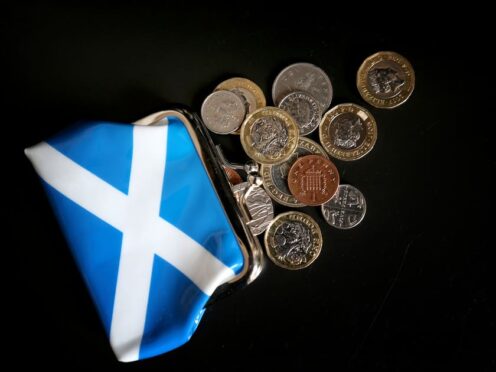
Scottish tax increases will be offset by UK-wide cuts to national insurance, experts have said ahead of the new tax year.
The divergence means Scots earning up to £112,900 will pay less combined compared to the previous year.
An estimated 49% of taxpayers in Scotland will pay more tax from Saturday than workers in England.
Analysis by the Chartered Institute of Taxation (CIOT) has illustrated the impact of tax divergence between the Scottish and the UK governments.
From Saturday, the Scottish Government’s advanced tax band comes into effect, with a 45% rate applying to those earning between £75,000 and £125,140 – meaning higher earners will pay up to £5,232 more than elsewhere in the UK.
The starter, basic and intermediate thresholds will also increase with inflation, meaning the level at which Scottish taxpayers begin to pay more income tax than those in the rest of the UK increases from £27,850 to £28,867 – £23 less than elsewhere.

However, Chancellor Jeremy Hunt’s decision to cut national insurance instead of income tax in his latest Budget affects taxpayers across the UK.
The rate is set to fall from 10% to 8%.
Sean Cockburn, chairman of the CIOT’s Scottish technical committee, said it means part of the tax divergence will be “somewhat” offset.
CIOT data shows Scots earning under £125,140 will pay at least £580 less in tax in 2024-25 compared to the previous year due to the combination of income tax and national insurance changes.
He said: “Although the Scottish Government’s tax choices will result in higher earning Scots paying more income tax from this month, these have been somewhat offset by the UK-wide national insurance changes.
“It means that while Scots with earnings above £75,000 will pay more income tax, those with earnings under £112,900 will actually be paying less in tax and national insurance overall compared with the year just past.
“It illustrates what can happen when Scottish and UK tax choices interact with one another.”
Deputy First Minister Shona Robison, who is also in charge of Scotland’s finances, said the country has the “most progressive income tax system in the UK”.
She added: “The new advanced band builds on that progressive approach, protecting those who earn less and asking those who earn more to contribute more.
“Only 5% of Scottish taxpayers will pay a higher tax rate compared to last year and the majority of taxpayers are still paying less than they would elsewhere in the UK.”
A UK Government spokesman said: “The second successive record national insurance cuts coming into full force this weekend will put over £830 a year on average back into the pockets of over 2.4 million hard-working people in Scotland, guaranteeing lower taxes for Scottish workers at a time when wages are rising.

“This is the next step in our long-term ambition to end the unfair double tax on work, by abolishing national insurance for workers in Scotland and across the UK.”
Scottish Labour leader Anas Sarwar has said Scottish taxpayers are “being forced to foot the bill for SNP and Tory mismanagement”.
Speaking ahead of a campaign event on Friday, he said: “Humza Yousaf is detached from reality if he thinks that 1.5 million Scots should pay more tax and oil and gas giants should pay less.
“Scotland is being failed by an SNP Government that is attempting to use income tax as a sticking plaster to cover for their woeful failure to grow our economy or manage public finances.
“Just like the Tories, the SNP is not on the side of working people.
“Under both the SNP and the Tories, Scots are paying more and getting less – while taxes keep rising, so too do NHS waiting lists.”
But Scottish Conservative finance spokeswoman Liz Smith said: “Labour voted for the income tax rises we now have and praised them as ‘progressive’.
“No-one is going to be taken in by this belated conversion. The Scottish Conservatives are the only party that has consistently opposed these punitive nat taxes and are committed to scrapping them.”
The Scottish Government previously said the additional money will “carefully balance the need to raise revenues to support our vital public services with the impact on taxpayers and the economy”.

Enjoy the convenience of having The Sunday Post delivered as a digital ePaper straight to your smartphone, tablet or computer.
Subscribe for only £5.49 a month and enjoy all the benefits of the printed paper as a digital replica.
Subscribe